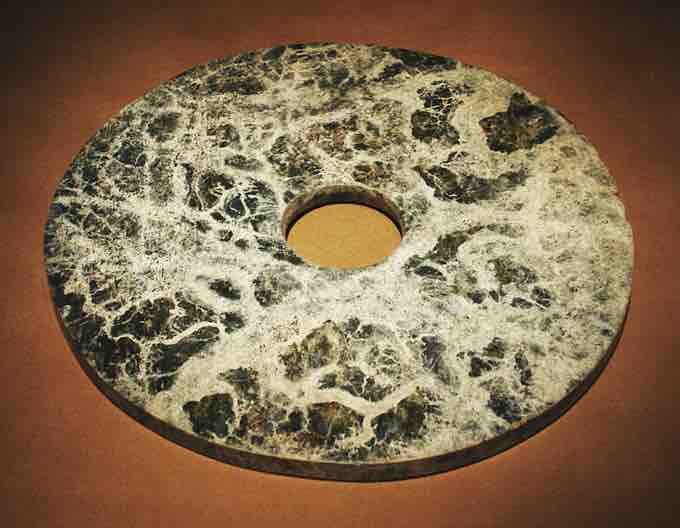Overview
Jade has been used in virtually all periods of Chinese history and generally accords with the style of decorative art characteristic of each period. Thus, the earliest jades of the Neolithic Period are often quite simple and unornamented, being used as ritual or decorative versions of the tools and weapons that were in ordinary use. These are presumed to have been symbols of political power or possibly religious authority.
Sources of Jade
During Neolithic times, the key known sources of nephrite jade in China for utilitarian and ceremonial items were the now depleted deposits in the Ningshao area in the Yangtze River Delta (during the Liangzhu culture, 3400–2250 BCE) and in an area of the Liaoning province in Inner Mongolia (during the Hongshan culture, 4700–2200 BCE). As early as 6000 BCE, Dushan Jade, or a jade substitute found near Mount Du, has also been mined. In the Yin Ruins of the Shang Dynasty in Anyang, Dushan Jade ornaments were unearthed in the tombs of the Shang kings.
Jade Objects
Jade was used to create many utilitarian and ceremonial objects, ranging from indoor decorative items to jade burial suits, reflecting the ancient Chinese belief that jades would confer immortality or prolong life and prevent decay. The bi and cong are types of objects only found in jade in early periods and are thought to have had religious or cosmic significance. The bi is a circular disk with a hole, originally plain but increasingly decorated over time, and the cong is a vessel, square on the outside but circular on the inside. In later literature, the cong represents the earth and the bi represents the sky.
Neolithic cong, 3rd millennium BCE
The cong is a Chinese jade vessel, square on the outside but circular on the inside.
Jade in the Liangzhu Culture
Background
The Liangzhu culture (3400-2250 BCE) was the last Neolithic jade culture in the Yangtze River Delta of China. Its area of influence extended from around Lake Tai north to Nanjing and the Chang Jiang, east to Shanghai and the sea, and south to Hangzhou. The culture was highly stratified, as jade, silk, ivory, and lacquer artifacts were found exclusively in elite burials, while simple pottery was more commonly found in the burial plots of poorer individuals. The type site at Liangzhu was discovered in Yuhang County, Zhejiang, and initially excavated by Shi Xingeng in 1936.
Liangzhu Jade
The jade from this culture is characterized by finely worked large ritual jades, commonly incised with the taotie motif. The most exemplary artifacts from the culture were its cong (cylinders, the largest of which weighs 3.5 kg), bi (discs) and Yue axes (ceremonial axes). Jade pendants were also found, designed with engraved representations of small birds, turtles, and fish. Many Liangzhu jade artifacts had a white, milky, bone-like aspect due to their tremolite rock origin and the influence of water-based fluids at burial sites, although jade made from actinolite and serpentine were also commonly found.

Liangzhu Jade Bi
Jade bi from the Liangzhu culture; the ritual object is a symbol of wealth and military power.